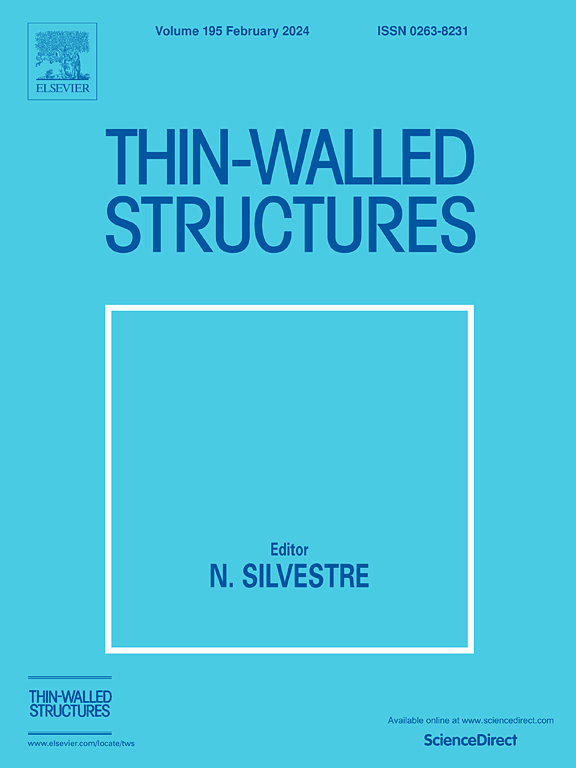Experimental study on wind-induced fatigue performance of standing seam metal cladding systems with anti-wind clips
IF 5.7
1区 工程技术
Q1 ENGINEERING, CIVIL
引用次数: 0
Abstract
Standing seam metal cladding systems with anti-wind clips are extensively used in public buildings located in regions prone to strong winds. These reinforced seam-clip connections are susceptible to fatigue effects when subjected to long-term fluctuating wind loads. The complex mechanical behaviors of these connections contribute to a complex fatigue-induced failure mechanism, which is crucial for evaluating the fatigue performance of the systems but has received limited attention in existing studies. This study systematically analyzed the fatigue-induced failure mechanism of such systems using an air pressure box and prototype specimens. Quasi-static tests were conducted initially to determine the ultimate bearing capacity of the systems, followed by dynamic fatigue tests involving eight loading scenarios with various amplitudes. The study found significant differences between pull-out failures in static tests and tearing failures in dynamic tests. High stress concentration zones, particularly at metal sheet contacts with anti-wind clips and bending areas, can exacerbate damage accumulation under dynamic loads. These zones can initiate cracks when the cycle reaches 47 % of the fatigue life and expedite their propagation, ultimately leading to tearing failure. The dynamic response has been analyzed, with differences from the static response quantified. To assess the resistance capacity of systems to tearing failures, a fatigue life model was proposed to elucidate the relationship between load amplitudes and cycles. A diminishing trend in the model with the increase of amplitudes indicates that the fatigue resistance capacity is susceptible to high load amplitudes. These findings can effectively evaluate the fatigue resistance capacity of the systems.
求助全文
约1分钟内获得全文
求助全文
来源期刊

Thin-Walled Structures
工程技术-工程:土木
CiteScore
9.60
自引率
20.30%
发文量
801
审稿时长
66 days
期刊介绍:
Thin-walled structures comprises an important and growing proportion of engineering construction with areas of application becoming increasingly diverse, ranging from aircraft, bridges, ships and oil rigs to storage vessels, industrial buildings and warehouses.
Many factors, including cost and weight economy, new materials and processes and the growth of powerful methods of analysis have contributed to this growth, and led to the need for a journal which concentrates specifically on structures in which problems arise due to the thinness of the walls. This field includes cold– formed sections, plate and shell structures, reinforced plastics structures and aluminium structures, and is of importance in many branches of engineering.
The primary criterion for consideration of papers in Thin–Walled Structures is that they must be concerned with thin–walled structures or the basic problems inherent in thin–walled structures. Provided this criterion is satisfied no restriction is placed on the type of construction, material or field of application. Papers on theory, experiment, design, etc., are published and it is expected that many papers will contain aspects of all three.
 求助内容:
求助内容: 应助结果提醒方式:
应助结果提醒方式:


